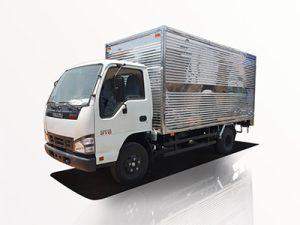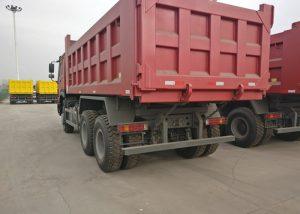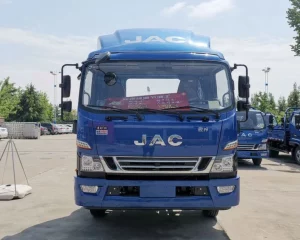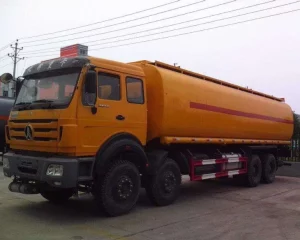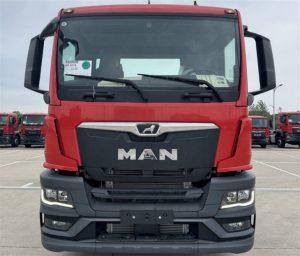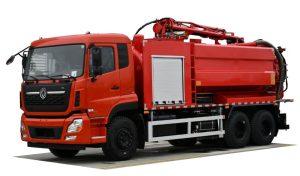Monday to Saturday - 8:00 -17:30
Everything You Need to Know About 18 Wheeler Tankers
Introduction to 18 Wheeler Tankers
The trucking industry is an essential part of the global economy, and 18-wheeler tankers play a crucial role in transporting various liquids, including fuel, water, and chemicals. These large vehicles are specifically designed to carry significant loads over long distances. This article will explore the intricacies of 18-wheeler tankers, including their types, specifications, benefits, safety measures, and maintenance tips, among other topics.
What is an 18 Wheeler Tanker?
An 18-wheeler tanker, also known as a tank truck or fuel truck, is a large vehicle equipped with a tank to transport liquids. The term “18-wheeler” refers to the vehicle’s total number of wheels, which include the truck itself and the trailer that carries the tank. These trucks are designed to carry a vast amount of material and are commonly used in various industries, including agriculture, construction, and energy.
Types of 18 Wheeler Tankers
1. Fuel Tankers
Fuel tankers are used primarily for transporting gasoline, diesel, and other types of fuels. They are equipped with multiple compartments to separate different types of fuel types and reduce contamination risks.
2. Chemical Tankers
These tankers are meant for transporting hazardous materials, including various chemicals. They are built with specific materials and designs to ensure safety and prevent leaks.
3. Water Tankers
This type of tanker is used to transport potable and non-potable water. Water tankers often have a specialized tank equipped with valves and pumps to facilitate the loading and unloading process.
4. Food Grade Tankers
Food-grade tankers are designed to transport food products, including milk and edible oils. They must comply with strict sanitation and safety standards to ensure that no contamination occurs.
Specifications of 18 Wheeler Tankers
1. Capacity
18-wheeler tankers come in various capacities, typically ranging from 5,000 to 11,000 gallons, depending on the type of liquid being transported. The capacity often dictates the legal load limits allowed on highways.
2. Materials
The tanks of 18-wheeler tankers are commonly made from stainless steel or aluminum. These materials are chosen due to their durability, corrosion resistance, and light weight, which allows for greater payloads.
3. Design and Shape
The design of an 18-wheeler tanker can vary. Some tanks are cylindrical, while others are rectangular. Tankers may also feature baffles, which are internal walls that control the flow of liquid and improve vehicle stability.
4. Safety Features
Modern tankers come equipped with safety features, such as pressure relief valves and emergency shut-off systems. These features help minimize risks associated with transporting hazardous materials.
Benefits of Using 18 Wheeler Tankers
1. Efficiency
18-wheeler tankers can transport large quantities of liquid in a single trip, reducing the number of trips needed and lowering transportation costs.
2. Flexibility
Tankers can transport different types of liquids, allowing logistics companies to serve various industries efficiently.
3. Reduced Environmental Impact
Using tankers can lower the carbon footprint of delivering liquids compared to using smaller vehicles for multiple trips.
4. Enhanced Safety
Transporting liquids in specialized tankers minimizes the risk of spills and leaks, enhancing safety for both the vehicle operator and the environment.
Regulations and Compliance
1. Licensing Requirements
Drivers of 18-wheeler tankers typically require a specialized Commercial Driver’s License (CDL) and may need additional endorsements depending on the type of material being transported.
2. Hazardous Materials Regulations
Transporting hazardous materials requires compliance with regulations set by The Department of Transportation (DOT) and Hazardous Materials Regulations (HMR) to ensure safe transport.
3. Insurance and Liability
Insurance for 18-wheeler tankers generally includes higher premiums due to the associated risks of transporting liquids. Ensuring that a comprehensive insurance policy is in place is essential for business protection.
Safety Measures for 18 Wheeler Tankers
1. Regular Inspections
Conducting regular inspections of the tanker and its components can help identify potential issues before they become major problems.
2. Driver Training
Proper training is essential for drivers handling 18-wheeler tankers. Training should include handling emergencies, safe driving practices, and knowledge of the specific materials being transported.
3. Emergency Protocols
Focused emergency protocols should be established and understood by all employees to ensure a swift response to accidents or spills.
Emergency Response Equipment
Having appropriate emergency equipment, such as spill kits and personal protective equipment (PPE), readily available is crucial for effective incident management.
Maintenance Tips for 18 Wheeler Tankers
1. Routine Maintenance Schedule
Establishing a comprehensive maintenance schedule is essential for keeping the tanker in top condition. This includes checking brakes, tires, lights, and tank integrity.
2. Cleaning Procedures
Regular cleaning of the tanker is essential, especially for food-grade and chemical tankers. Proper cleaning procedures should be followed to avoid contamination.
3. Fluid Checks
Fluid levels, including oil, hydraulic fluid, and coolant, should be checked regularly to ensure the tanker operates effectively.
Example Maintenance Checklist
| Maintenance Task | Frequency |
|---|---|
| Check tire pressure | Weekly |
| Inspect brakes | Monthly |
| Clean tanker interior | After each load |
Common Challenges Faced by 18 Wheeler Tankers
1. Weather Conditions
Adverse weather can pose significant challenges to 18-wheeler tankers, including reduced visibility and road traction. Drivers must be trained to navigate these conditions safely.
2. Regulatory Changes
Frequent updates to regulationsmay require logistics companies to adapt quickly. Keeping abreast of these changes is crucial for compliance.
3. Competition
The trucking industry is highly competitive, necessitating efficient operations and effective pricing strategies to remain viable.
Future Trends in 18 Wheeler Tankers
1. Electric Tankers
The increasing emphasis on environmental sustainability is leading the way for electric or hybrid 18-wheeler tankers, which have the potential to reduce harmful emissions significantly.
2. Technological Advancements
Use of technology like GPS and telematics is improving route planning and vehicle tracking, which can enhance efficiency in operations and logistics management.
3. Enhanced Safety Features
New technologies, including collision avoidance systems and advanced braking systems, are helping to improve safety for drivers and other road users.
FAQs about 18 Wheeler Tankers
1. What types of liquids can be transported using an 18-wheeler tanker?
18-wheeler tankers can transport various liquids such as fuels, water, chemicals, and food products, depending on their design and specifications.
2. What are the licensing requirements for driving an 18-wheeler tanker?
A Commercial Driver’s License (CDL) with specific endorsements is required to operate an 18-wheeler tanker. Additional training on hazardous materials may also be necessary.
3. How do tankers ensure safety during transportation?
Tankers are equipped with a variety of safety features, including emergency shut-off valves and pressure relief systems, to minimize risks associated with transporting liquids.
4. What basic maintenance should be performed on an 18-wheeler tanker?
Routine maintenance includes checks on tires, brakes, fluid levels, and periodic cleaning of the internal tank to maintain its integrity and prevent contamination.
5. Are there any environmental regulations for 18-wheeler tankers?
Yes, environmental regulations govern the transportation of hazardous materials, including standards for emissions, spill prevention, and leak detection.
6. How can technology improve the efficiency of 18-wheeler tankers?
Technology such as GPS and telematics can optimize routes, monitor vehicle performance, and enhance communication in real-time, resulting in improved operational efficiency.



